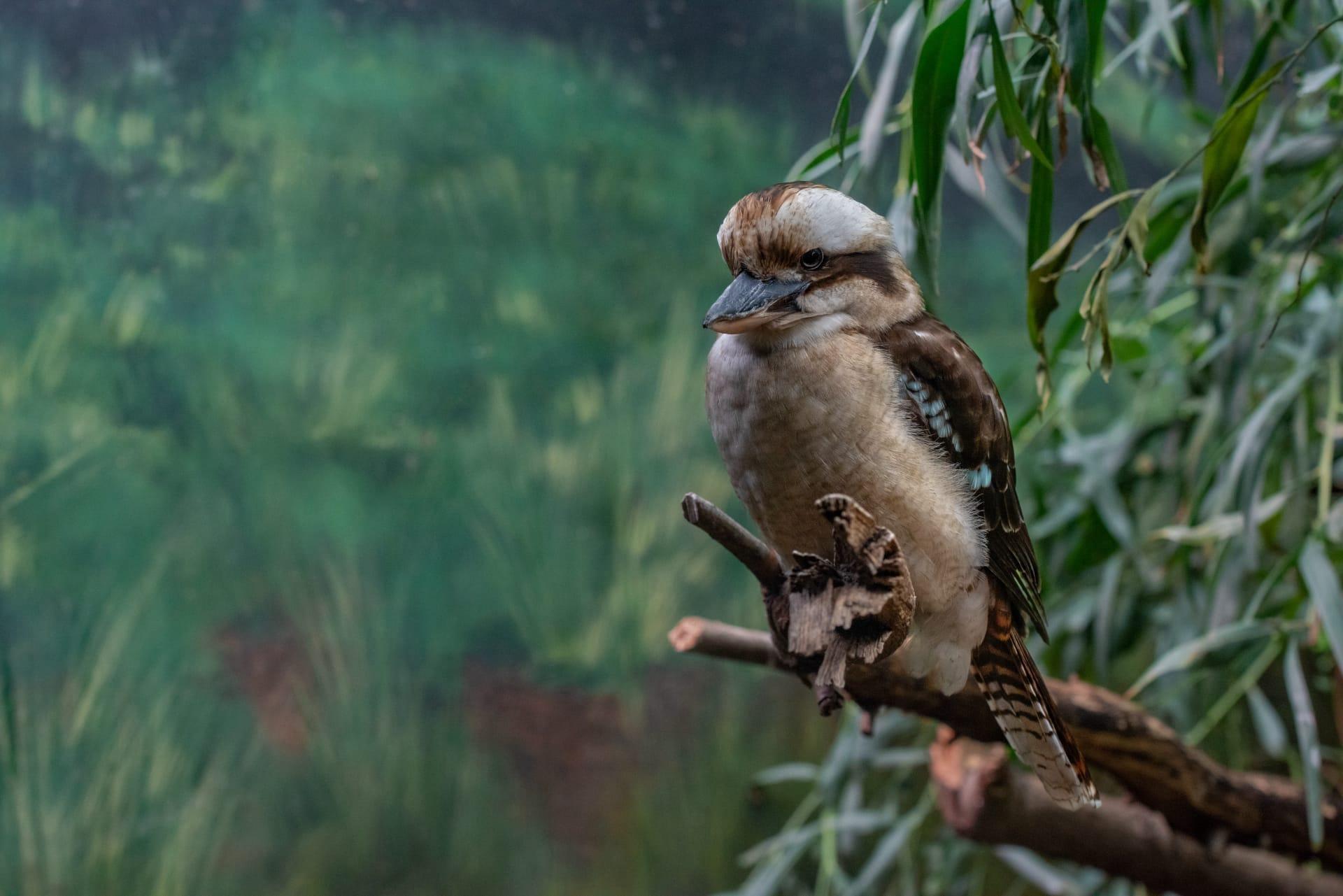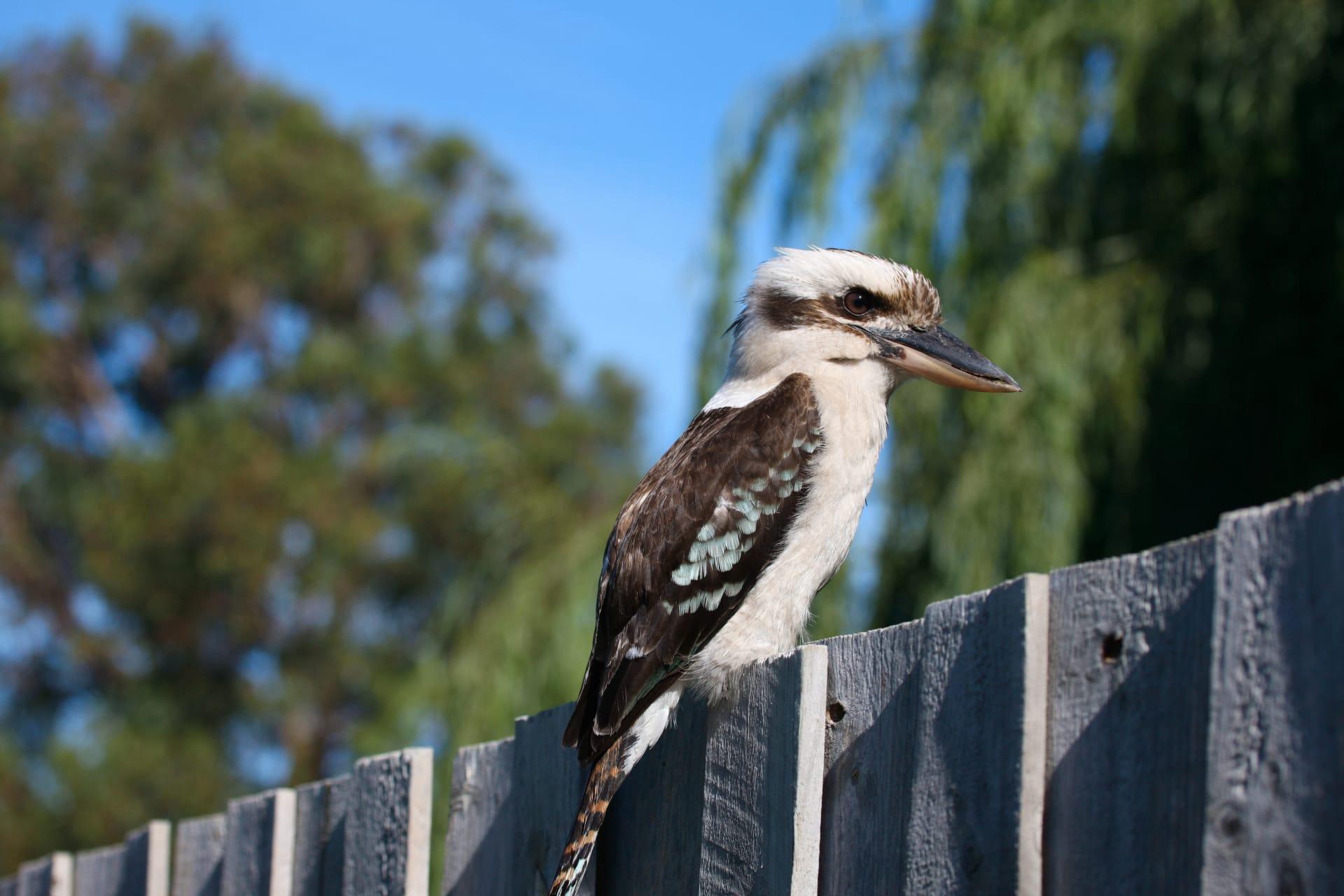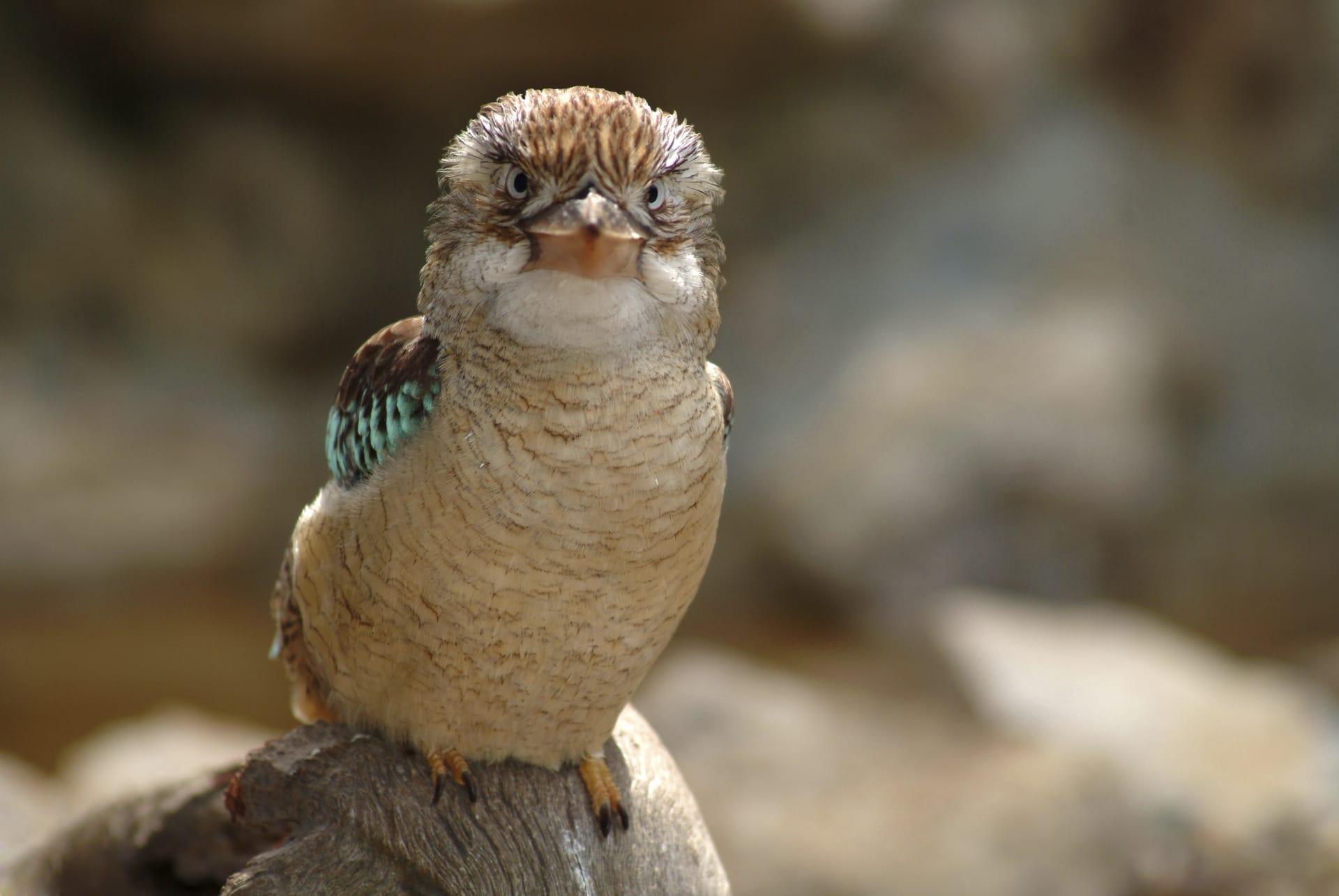Kookaburra Characteristics
- Home /
- Mini Encyclopedia /
- Animal /
- Kookaburra Characteristics
1
Kookaburras, known for their iconic laughter, are a fascinating bird species native to Australia and New Guinea. These birds, belonging to the kingfisher family, exhibit a robust and stocky build, with an average length of about 15 to 18 inches (38 to 47 cm). Their wingspan stretches approximately 24 to 28 inches (60 to 70 cm), making them quite noticeable. Adult kookaburras weigh around 300 to 480 grams, varying with species and environment. Notably, kookaburras have a lifespan of about 15 to 20 years in the wild, though in captivity, they can live up to 20 years or more, thanks to controlled environments and diet.
One of the most distinctive features of kookaburras is their beak. It's unusually large and sturdy, measuring about 4 inches (10 cm) in length. This powerful beak is not just for show; it plays a critical role in their survival. Adapted for their carnivorous diet, it helps them catch and consume a variety of prey, including snakes, insects, small mammals, and birds. The strength of their beak allows them to kill prey by hitting it against a branch or rock, a unique behavior among birds. This technique also helps in softening the meat, making it easier for them to eat.

2
Question: Why do kookaburras laugh?
Answer: The distinctive 'laugh' of the kookaburra is actually a territorial call, crucial for maintaining their social structure. This laugh, often heard at dawn and dusk, is a form of communication used to establish territory and ward off potential intruders. It also serves as a bonding mechanism within the family group. The laughing chorus, typically led by the dominant pair in a family, can last for several minutes. Interestingly, each family has a unique laugh, which helps in distinguishing between different groups. The laugh of a kookaburra is not only a signature sound of the Australian bush but also a vital part of their social interaction and territorial behavior.

3
Kookaburras are known for their unique movement traits. They are predominantly perching birds and are not typically seen in long flights. Their flight is characterized by a series of rapid wing beats followed by a brief glide, appearing somewhat ungainly but effective for short distances. Kookaburras are more often seen sitting still on a branch, keenly observing their surroundings for potential prey. This sedentary behavior is a strategic hunting tactic, conserving energy while scanning for food.
The hunting style of kookaburras is quite remarkable. They are carnivorous and possess a 'sit-and-wait' predatory strategy. When they spot a prey, they swoop down swiftly and grab it with their strong beak. Their diet includes a wide range of small animals like insects, worms, frogs, and small birds. A unique aspect of their hunting is their ability to catch snakes, even venomous ones. They kill their prey by smashing it against a rock or branch, which also helps in tenderizing the meat. This method is particularly useful for larger prey like snakes, making them easier to consume.

4
Kookaburras primarily inhabit woodlands, open forests, and partially cleared areas. They are quite adaptable and can also be found in suburban areas with suitable tree cover. These environments provide them with ample opportunities for nesting and hunting. Kookaburras prefer areas with a mixture of trees and open spaces, allowing them to spot their prey from a perch easily. Despite being native to Australia and New Guinea, they have been introduced in other regions, such as Tasmania and the southwest of Western Australia.
Regarding reproduction, kookaburras are known for their monogamous breeding habits, often mating for life. They typically breed in tree hollows, which they line with shredded bark and leaves. The female usually lays 2 to 4 eggs, which are incubated for about 24 to 26 days. Both parents, along with older offspring from previous clutches, partake in the incubation and feeding of the young. This cooperative breeding behavior is unique and essential for the survival of the species. Young kookaburras typically stay with their parents for several years, assisting in raising subsequent broods before establishing their own territories.

5
Book: "The Laughing Kookaburra" by John Smith (1995, Australia). This book delves into the fascinating world of kookaburras, exploring their behavior, habitat, and the unique characteristics that make them a symbol of the Australian wilderness. Smith provides detailed insights into their social structure, diet, and the famous kookaburra 'laugh', blending scientific research with engaging anecdotes from his fieldwork in Australia.
Book: "Kookaburras: Masters of the Australian Bush" by Emily Taylor (2008, United States). Taylor's book is a comprehensive guide to the kookaburra's life cycle, from birth to adulthood. It covers topics such as their hunting techniques, breeding habits, and the role they play in the ecosystem. The author's vivid descriptions and personal observations offer readers an intimate look into the lives of these remarkable birds, highlighting their importance in Australian culture and natural history.